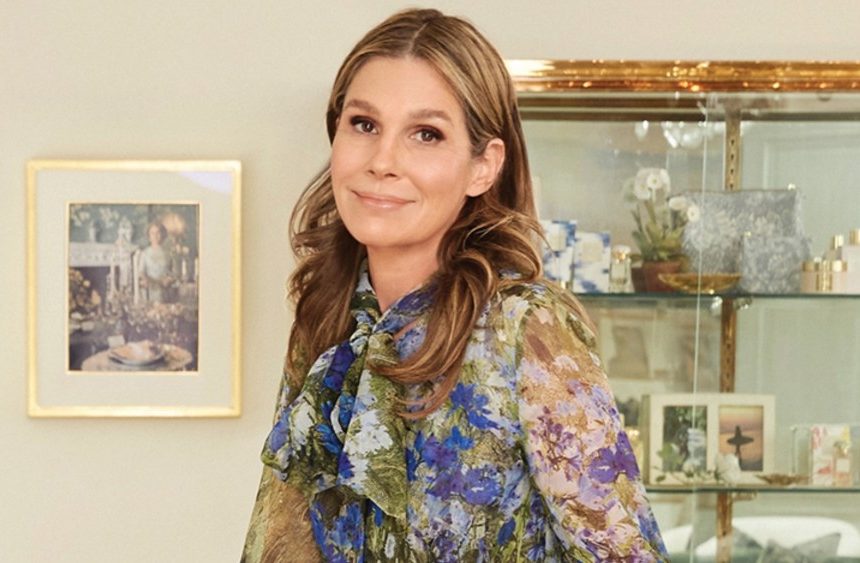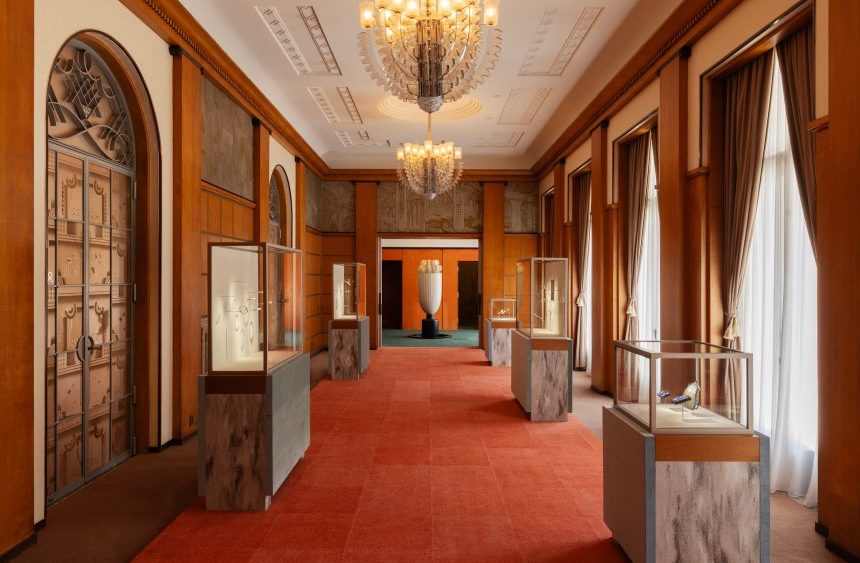Subscribe to High Margin by Robert Williams: perspectives on creativity and business in the world of luxury — from fashion and watches to art, wellness, travel and more.
Hello from Paris, where the viral news that two exceptionally good-looking people have been arrested for the Louvre heist is, unfortunately, fake. Those are old mugshots that circulated on Tumblr a decade ago.
I doubt the absence of hot protagonists will stall the Netflix or Hulu-ication of the incident, however. There’s still time to be a part of it: Amid a nation-wide manhunt, ministerial press conferences and congressional hearings, I have yet to see the addition of any actual security guards patrolling the museum’s perimeter. It looks like you could still enter through the very same window. Vive la France!
In this edition: Why investors are tempering their optimism for Kering’s turnaround, Shein ruffles feathers in the capital of couture, Biologique Recherche and Loewe’s new stores.
Galeries Lafayette’s Shein Schism
That signature mix of outcry and inaction has long defined the rise of Shein in France, as well. While countless climate summits and congressional working groups talked about how to rein in fast fashion, the Chinese platform has been allowed to grow into the country’s biggest fashion e-tailer, with 25 million customers. Along with Temu, Shein accounted for more than one-fifth of packages shipped in France last year.
Now, Shein’s decision to use Paris as a beachhead for its push into brick-and-mortar retail is bringing its conflict with France’s retail establishment, environmental groups and politicians to a head.
Department store chain Galeries Lafayette — best known for its sprawling, luxurious flagship in Paris’ 9th arrondissement — announced yesterday that it was parting ways with its license partner, SGM (Societé des Grands Magasins) over its decision to open Shein corners inside its stores. Seven Galeries Lafayette locations operated by SGM will be rebranded following the split.
Galeries Lafayette previously tried to block the Shein openings, saying the brand is incompatible with its values and strategy (not to mention that the adjacency would be anathema to key partners like LVMH and Chanel).
State-backed bank Caisse des Dépots exited a deal to help SGM acquire the real estate for its BHV department store on Rue de Rivoli, which is where the Paris’ Shein is opening. While much of the anti-fast-fashion regulation passed by the French Senate in June still needs to be ironed out with the French Assembly and European Union, some measures including a ban on advertising and influencer marketing for Shein are meant to go into effect as soon as January.
Shein’s decision to open in Paris seemed like a classic case of tackling the toughest market first—using the French capital’s fashion aura to anchor their legitimacy and hone operational excellence that can be trickled down elsewhere.
But it’s also become a “Hail Mary” to make stricter regulation politically impracticable, by providing a physical manifestation of how much French people love the brand. It could work: At BHV Wednesday, I counted nearly 200 people waiting in line for a first peek at the Shein store.
There were protestors, too, but only around a dozen. I was surprised, as Shein is in even hotter water than usual this week after listing a realistic and very youthful sex doll for sale. The company has since banned sex dolls from the site, but the French government has moved to suspend the site from trading as outrage heated up and weapons were also found.
That SGM thought its deal with Shein was more valuable than retaining the Galeries Lafayette brand, or financing for an irreplaceable piece of real estate, says a lot about where the French consumer is really at (or just how good the Chinese group is at pleading its case).
France tends to bristle when its national identity is confronted with unwelcome evidence of facts on the ground. No one wants to recognise that in the capital of haute couture and gastronomie, plenty of people wear Shein and eat KFC.
The moral panic that comes from challenging France’s identity as a bastion of discerning consumption provides cover for plain old protectionism: the regulatory measures are full of carve outs designed to make them apply to Shein and Temu but not stores selling fast fashion à la française (Celio, Kookai, Jennyfer) or bargain sports giants like Decathlon. All of whom specialise in selling cheap garments made in low-cost labour centres.
For Galeries Lafayette, the split with SGM is likely to spur a further shift away from the mass market. The chain has long had a broad positioning — perhaps untenably so — ranging from flagship-sized Rolex and Chanel shop-in-shops to 12 euro laundry hampers.
The decline in package travel by Chinese customers since the pandemic has been a major blow to sales. Since then, management attention has been focused on raising its profile among top-spending clients from other markets, as well as renovating its premium and accessible luxury spaces to draw younger, style-conscious locals. Needs-based shopping (Napapijri puffers and Eastpack rucksacks) is still present, but takes a backseat to a bourgeois silhouette that says “Parisienne” clearly enough to appeal to both locals and tourists: Loulou de Saison, Soeur, Balzac…
Kering Investors Pull Back

After market euphoria over the nomination of CEO Luca de Meo fuelled a remarkable rebound in Kering’s share price — up over 100 percent from its low in April — analysts at several investment banks are urging caution on the stock.
HSBC downgraded its recommendation for Kering to “Hold” on Oct. 24, less than two months after upgrading the stock to “Buy”.
Under de Meo, the group has swiftly improved its debt profile and freed up management focus: pushing through changes that were being weighed ahead of his arrival such as delaying Kering’s acquisition of Valentino and selling its beauty division to L’Oréal for $4 billion. Third-quarter sales also fell less than expected across brands.
But HSBC sees few opportunities to show additional progress between now and the group’s full-year results in February. “It is time to take a breather, as we see few positive catalysts playing out between now and the first speech of CEO Luca de Meo likely happening with FY2025 earnings publication in mid-February,” analyst Erwan Rambourg wrote. “In the absence of positive catalysts in the next three months, the share price will not move much.”
In short, the market remains relatively bullish on de Meo, but needs to see results. In the meantime, the stock’s rebound has provided a welcome exit point for some investors: Shares are down 12 percent from their peak on Oct. 23.
With Kering now trading at similar P/E multiples as it did during Gucci’s peak under Marco Bizzarri and Alessandro Michele, the key downside risk — of “Gucci having lost so much relevance that it might cost a lot more than expected to stem market share losses,” according to Rambourg — starts to seem more tangible than the upside, that share prices will continue to improve on the back of more positive announcements from Kering.
“We think it is prudent to take profit from Kering at this stage; it could run out of positive new news for a while,” analyst Luca Solca wrote. “Luca de Meo has hit the ground running…. Yet, the share price excitement needs to be gauged against a jury still out on how Demna could work out for the core brand.”
A caveat: Of course, all of this analyst chatter is to be taken with a grain of salt. Their forecasts are just one data point investors use to inform their decisions, and the accuracy of their predictions is spotty at best. I don’t remember any analyst saying to sell LVMH and buy Hermès from 2023 to mid-2025—a long bet that would have really paid off.
Retail Radar

A couple new stores in Paris (other than Shein): Gentle Monster opens its first flagship in the city Thursday, on Rue Vieille du Temple in the Marais. The store promises to “embody the brand’s spirit” with a robotic installation its calling Giant Head Kinetic Object.
Last weekend, Biologique Recherche unveiled its gleaming new retail concept at Le Bon Marché. The brand used to sell almost exclusively through spas — the closest thing to a retail experience was at its “Ambassade” locations that combined flagship stores with treatment centres.
The brand is now leaning into retail as it seeks to accelerate growth under chief executive Jean-Guillaume Trottier, an Estée Lauder veteran brought in last year. A New York flagship is slated for April; the brand has also inked a deal with Bloomingdales. To an outsider, it looks like this brand may be gearing up for a sale.
Loewe is also opening its expanded flagship store on Avenue Montaigne Thursday. A billboard teasing the store is splashed across a building visible from the Pont Neuf, featuring a still life of a Puzzle bag lensed by Carlijn Jacobs. The image is great: it feels like the brand is in a sweet spot under its new creative directors Jack McCullough and Lazaro Hernandez — keeping up the focus on Loewe’s pillars while turning up the temperature with hotter, slightly more direct marketing.
Next Week in Luxury:
- Paris Photo 2025 opens Nov. 13 in the Grand Palais.
- Burberry reports results for its fiscal first half Thursday morning (Nov. 14).
- Richemont reports results Friday (Nov. 15).


